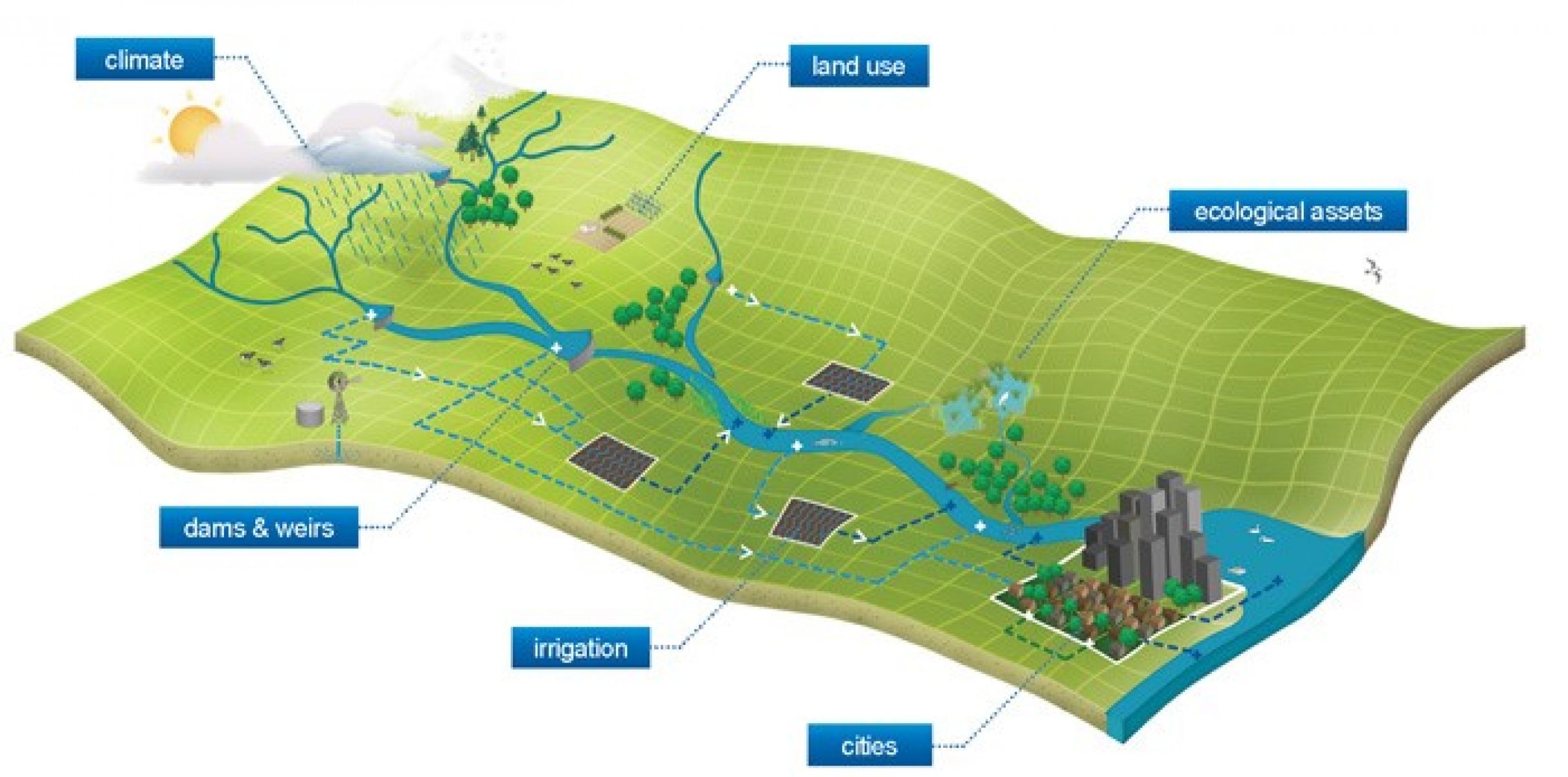On this page:
Hydrological modelling informs and guides Victorian water policy, planning and management decisions.
Each of Victoria’s river and water supply systems across our 29 river basins may require one or more hydrological models.
About Source
Source is Australia’s national hydrological modelling platform. It can be used to build hydrological models that simulate all aspects of water resource systems. Source can support better integrated planning, operations and governance.
It’s scalable for urban catchments to river basins and can include human and ecological influences.
Using Source, we can:
- make better, more informed decisions
- manage risks and support more efficient operations
- improve the management of water storages
- improve the management of water deliveries for the environment and other users
- improve the management of water trade and carryover · make it easier to meet our Murray-Darling Basin Plan obligations.
For more information on Source, please visit the eWater website.
How we got here
The Council of Australian Governments (COAG) endorsed a National Hydrological Modelling Strategy (NHMS) in 2008 to support and enhance hydrologic modelling.
The NHMS aims to ensure future water planning and management across Australia is informed by best-practice modelling.
Source is the key deliverable of the NHMS. The platform has been developed and maintained by eWater Limited. eWater is a joint government-owned, not-for-profit partnership, of which the State of Victoria is a company member.

Using Source: the basics
Source uses a network of nodes and carriers to represent water supply systems. This includes features such as reservoirs, demand centres, waterways, pipes, and so on.
It can be used as a what if tool to assess various options, such as changes in operating rules, or physical system modifications.
System changes can be quickly and easily configured, and their effects investigated. The user can specify the desired level of detail of output from the model.
Model outputs can be presented graphically, either in raw form or after post-processing using a suite of utility programs separate from the simulation model.
Input and output data files have the same format and can be easily transferred to spreadsheet packages such as Microsoft Office.
Page last updated: 08/09/23
